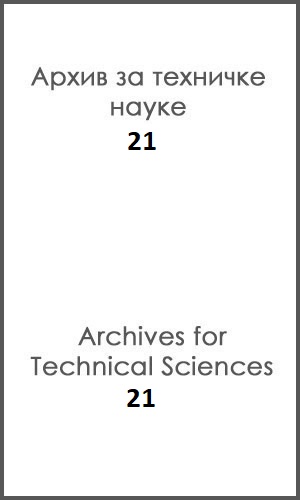LANDSLIDES ON THE ROADS OF THE NORTHERN PART OF THE REPUBLIC OF SRPSKA AS A RESULT OF ELEMENTAL OR ANTHROPOGENIC PROCESSES
DOI:
https://doi.org/10.7251/afts.2019.1121.011DjAbstract
The Republic of Srpska, which is an integral part of Bosnia and Herzegovina, was affected by intense
precipitation during May 2014 and May 2015. The northern part of the Republic of Srpska is located
between the plain area of the Sava River and the mountain massif of the inner Dinarides, while the
eastern and western parts are confined to the rivers Drina and Una. Increased precipitation, which in
2014 was three times higher than the average, activated large number of landslides, and most of them
threatened the facilities of various purposes. One year later, in the same month, this area was again hit
by intense precipitation, less than in the previous year, but more significant by the size of activated
landslides.
The most significant landslides were formed along the roads, and the degree of damage is different,
depending on the method of construction and maintenance during exploitation.The slopes on which
roads are built are in general conditionally stable, and for years have kept their stability in natural
conditions. By engineering interventions during the construction of the roads, the natural state of
balance was disturbed, which was manifested with delay, since the slopes were not well repaired. The
open terrain profiles on the slopes created favorable conditions for water to flow into the quasi
homogeneous and heterogeneous clay sediments, where their stability was disturbed.
The roads that were built of good quality as well as slope reparations during construction did not have
significant damage during intense precipitation, although some of them were built several decades
earlier. During the inventory of landslides on the roads, the effects of elemental and anthropogenic
processes were analyzed, where 23 of the characteristic landslides were selected. The periods of
construction before and after 1990 were separated, that is, the periods of earlier quality construction of
facilities from today's modern one.

